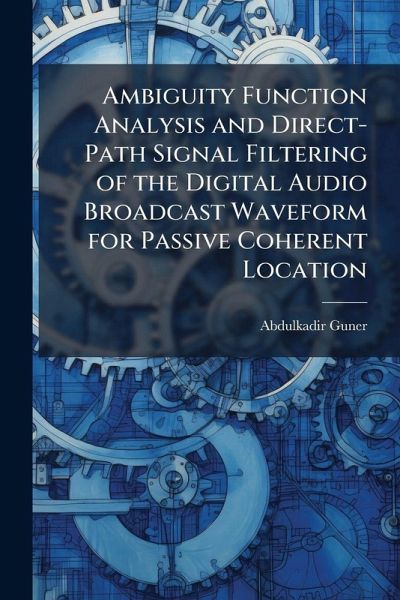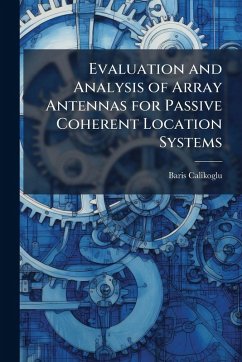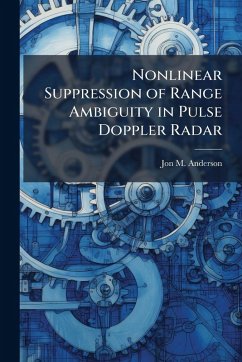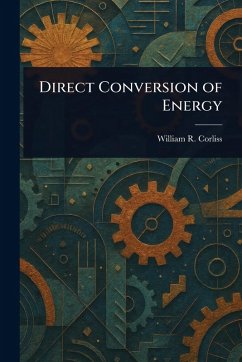
Ambiguity Function Analysis and Direct-Path Signal Filtering of the Digital Audio Broadcast Waveform for Passive Coherent Location
Versandkostenfrei!
Versandfertig in über 4 Wochen
17,99 €
inkl. MwSt.
Weitere Ausgaben:

PAYBACK Punkte
9 °P sammeln!
This research presents an ambiguity function analysis of the digital audio broadcast (DAB) waveform and one signal detection approach based on signal space projection techniques that effectively filters the direct path signal from the receiver target channel. Currently, most Passive Coherent Location (PCL) research efforts are focused and based on frequency modulated (FM) radio broadcasts and analog television (TV) waveforms. One active area of PCL research includes the search for new waveforms of opportunity that can be exploited for PCL applications. As considered for this research, one poss...
This research presents an ambiguity function analysis of the digital audio broadcast (DAB) waveform and one signal detection approach based on signal space projection techniques that effectively filters the direct path signal from the receiver target channel. Currently, most Passive Coherent Location (PCL) research efforts are focused and based on frequency modulated (FM) radio broadcasts and analog television (TV) waveforms. One active area of PCL research includes the search for new waveforms of opportunity that can be exploited for PCL applications. As considered for this research, one possible waveform of opportunity is the European digital radio standard called DAB. For this research, the DAB performance is analyzed for application as a PCL waveform of opportunity. For this analysis, DAB ambiguity function calculations and ambiguity surface plots are created and evaluated. This work has been selected by scholars as being culturally important, and is part of the knowledge base of civilization as we know it. This work was reproduced from the original artifact, and remains as true to the original work as possible. Therefore, you will see the original copyright references, library stamps (as most of these works have been housed in our most important libraries around the world), and other notations in the work. This work is in the public domain in the United States of America, and possibly other nations. Within the United States, you may freely copy and distribute this work, as no entity (individual or corporate) has a copyright on the body of the work. As a reproduction of a historical artifact, this work may contain missing or blurred pages, poor pictures, errant marks, etc. Scholars believe, and we concur, that this work is important enough to be preserved, reproduced, and made generally available to the public. We appreciate your support of the preservation process, and thank you for being an important part of keeping this knowledge alive and relevant.




![The Textile Mills [microform], America's Second Largest Industry, and the Direct Method of Reaching the Buyers in the Textile Industry Cover The Textile Mills [microform], America's Second Largest Industry, and the Direct Method of Reaching the Buyers in the Textile Industry](https://bilder.buecher.de/produkte/65/65632/65632769n.jpg)
![Silver Islet and Wood's Location [microform]: Letter From A.H. Sibley to the Hon. the Commissioner of Crown Lands Cover Silver Islet and Wood's Location [microform]: Letter From A.H. Sibley to the Hon. the Commissioner of Crown Lands](https://bilder.buecher.de/produkte/66/66126/66126189n.jpg)

![Preliminary Report on Mining Location No. 1 K, Lake of the Woods [microform] Cover Preliminary Report on Mining Location No. 1 K, Lake of the Woods [microform]](https://bilder.buecher.de/produkte/66/66189/66189571n.jpg)


![On the Location and Examination of Magnetic Ore Deposits by Magnetometric Measurements [microform] Cover On the Location and Examination of Magnetic Ore Deposits by Magnetometric Measurements [microform]](https://bilder.buecher.de/produkte/65/65622/65622879n.jpg)

